Direct Model Editing
Once a data model is created using the Data Model wizard, users with administrative rights to that database can DIRECTLY add user hierarchies and base measures to any tabular data models directly from inside Data Discovery.
The changes can be performed from various context menus (described below) as well as the Model tab in Data Discovery.
WARNING: Direct model changes are permanent and cannot be undone.
Add a User Hierarchy
To add a user hierarchy on-the-fly, go to the Hierarchies panel in Data Discovery.

While pressing Ctrl key, select the attribute hierarchies you would like to put in a new user hierarchy. Right-click and select "New Model Hierarchy" to create the new user hierarchy.
NOTE: The order of selection will determine the hierarchy structure.
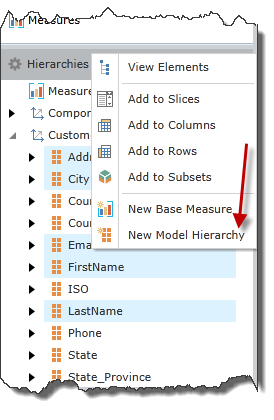
A pop-up dialog box will appear asking you to name the new user hierarchy.
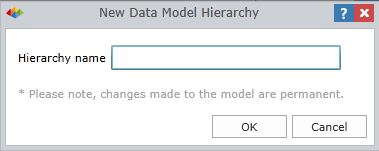
After a quick processing time, the new hierarchy will appear in the Hierarchies panel for immediate use.
Add a Base Measure
The user has the ability to create base measures on-the-fly. This is NOT to be confused with calculated measures which are measures derived as part of the query. Base measures are built directly into the model.
Base vs Calculated Measures
Base measures are best used for granular calculations or metrics that are designed for the transaction level of the data source. They are also important for special measures that cannot be calculated on the aggregate data, like distinct sum or count.
Base measures are built using the "raw" columns or attributes in the existing model. To add a measure, select the attribute hierarchy (orange icons) that you would like to build a base measure against. Right-click and select "New Base Measure".
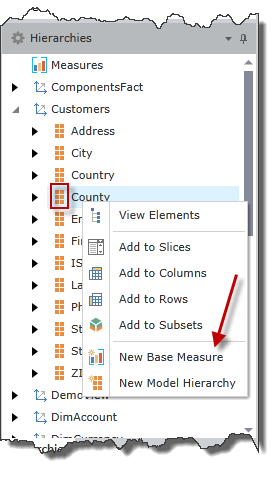
Depending on the attribute type selected, you will be presented with different aggregation options to define the metrics.
1. Numeric measure:
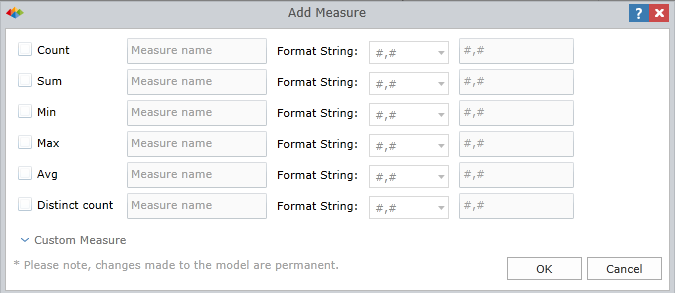
- Sum – adds the values in the column. This is also the default for numeric columns.
- Average – takes an average of the values in the column.
- Minimum – takes the minimum value in the column.
- Maximum – takes the maximum value in the column.
- Count – counts the values in the column.
- Distinct Count – counts the distinct values in the column.
- Custom Measure – you can create an MDX expression for the custom measure.
2. Text measure:

- Count – counts the values in the column.
- Distinct Count – counts the distinct values in the column. This is also the default for text.
- Custom Measure – you can create an MDX expression for the custom measure.
3.Date and Time measure:
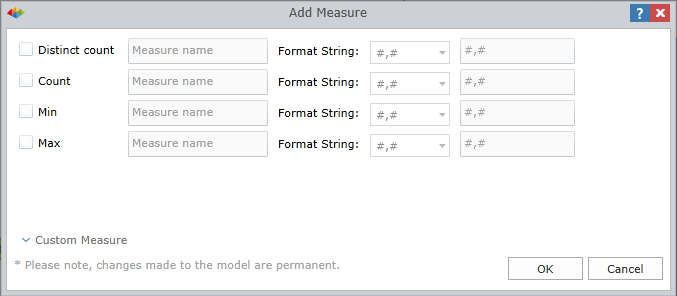
- Count – counts the dates in the column.
- Distinct Count – counts the distinct dates in the column. This is also the default for dates.
- Minimum – takes the minimum date in the column.
- Maximum – takes the maximum date in the column.
- Custom Measure – you can create an MDX expression for the custom measure.
Once you click OK, the engine will present a new measure for immediate use in the measures listing.
Home |
Table of Contents |
Index |
User Community
Pyramid Analytics © 2011-2022

